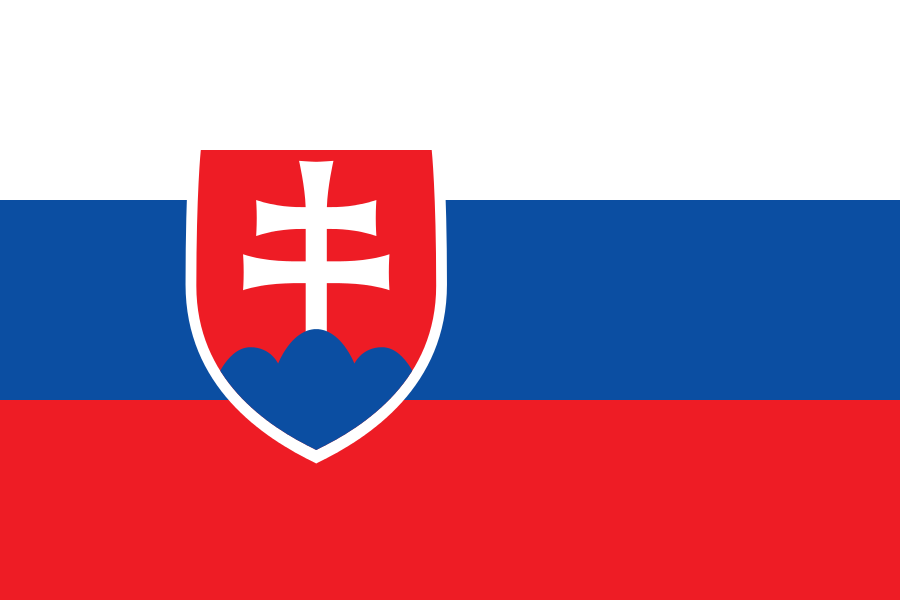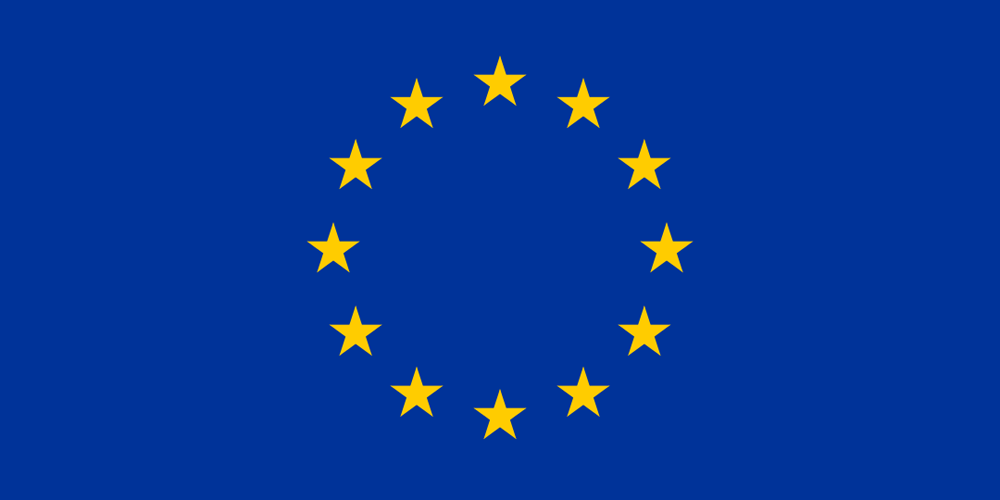Currency in Slovakia: EUR Send & Spend FX Guide
Resources for Expats, Travelers, and Entrepreneurs Navigating Life and Trade in Slovakia with the Euro.

What's in this Slovakia currency guide?
What currency is used in Slovakia?
The official currency of Slovakia (country code: SK) is the Euro, with symbol € and currency code EUR.
What is a good Euro exchange rate?
The BestExchangeRates.com currency comparison table below helps you see the total cost of your currency transaction by showing the exchange rates offered by different providers. It also makes it easy to spot potential savings from market-leading FX services compared to bank rates.
To see a full list of rates, enter your transaction type, currencies and amount then click ‘GET RATES’:
Loading rates...
|
|
|
Good things to know about the Euro
As of June 16, 2025, the Euro (EUR) has experienced notable developments affecting travelers, expats, and business owners:
- Interest Rate Adjustments: The European Central Bank (ECB) has reduced its key interest rates multiple times since April 2025, with the deposit rate now at 2%. This easing cycle aims to stimulate economic growth amid global uncertainties. (ft.com)
- Inflation Trends: Eurozone inflation has moderated, with the latest data showing a decrease to 2.4% in November 2024, bringing it closer to the ECB's 2% target. (nbcdfw.com)
- Eurozone Expansion: Bulgaria is on track to adopt the euro on January 1, 2026, following successful convergence assessments. This expansion may influence currency dynamics and economic interactions within the euro area. (en.wikipedia.org)
These developments are crucial for individuals and businesses engaged in international transactions, as they can impact exchange rates, purchasing power, and overall economic conditions.
For more EUR information check out our selection of Euro news and guides.
Frequently Asked Questions
What currency should I use in Slovakia?
The domestic currency in Slovakia is the Euro.
What is the Euro currency code and symbol?
The three letter currency code for the Euro is EUR — symbol is €.
What does the Euro look like?
Here is an example Euro banknote:

Which countries use the Euro?
It is the domestic currency in Eurozone, Aaland Islands, Andorra, Austria, Belgium, Croatia, Cyprus, Estonia, Finland, France, French Guinea, French Southern Territories, Germany, Greece, Guadeloupe, Vatican City, Ireland, Italy, Latvia, Lithuania, Luxembourg, Malta, Martinique, Mayotte, Monaco, Montenegro, Netherlands, Portugal, Reunion, Saint Barthelemy, Saint Martin, Saint Pierre and Miquelon, San Marino, Slovakia, Slovenia and Spain.
Is the Euro a closed currency?
No, the Euro is freely available and convertible. See guide: What is a closed currency?
What are equivalent amounts of CAD and EUR?
Here are some popular conversion amounts for CAD to EUR (Canadian dollar to Euro)*.
*Converted at the current CADEUR interbank exchange rate. Calculate actual payout amounts for Send Money and Travel Money exchange rates.

Travel money for Slovakia
Using Wise for Euro travel money is a smart choice for savvy travelers. With its competitive exchange rates and low fees, Wise allows you to convert and manage multiple currencies effortlessly.
Be careful when using your own bank's Debit/Credit Card, as your bank may also charge an extra 3% as an “Overseas Transaction Charge” plus “Overseas ATM” fees for withdrawing cash on top of the standard Visa/Mastercard 2.5% from market mid-rate.
For card purchases, if you are offered a choice of currencies always select to Pay in Euro otherwise you will typically get much worst dynamic currency conversion (DCC) exchange rates.
If you really want Euro cash before departure, you can save money by ordering online. You generally get better rates and can pick up the EUR cash locally or even on travel day at the airport.
Slovakia: Travel Guide
Traveling to Slovakia requires careful financial planning to ensure a smooth and cost-effective experience. Here's a comprehensive guide to help you navigate currency considerations and manage your money effectively during your visit.

Right in the heart of Europe, Slovakia is a land of castles and mountains, occasionally punctuated by industrial sprawl. More than a quarter-century after Czechoslovakia's break-up, Slovakia has emerged as a self-assured, independent nation. Capital city Bratislava draws visitors to its resplendent old town and tankard-clanking drinking culture. But Slovakia shines brightest for lovers of the outdoors. Walking trails in the High Tatras wend through landscapes of unearthly beauty, with mirror-still glacier lakes backed by 2000m peaks. Near the Austrian border, capital city Bratislava features a pedestrian-only Old Town with a lively cafe scene. Rising on a hill above the Danube River, Bratislava Castle houses a branch of the Slovak National Museum, with displays ranging from Roman artifacts to 20th-century arts and crafts.
What currency is used in Slovakia?
Slovakia’s currency is the Euro. The euro is the second most traded currency in the world, behind the US dollar, so it’s very likely that your bank will have euros on hand. However, there’s no guarantee that your home bank will offer the most competitive exchange rate.
In Slovakia, Visa, MasterCard and Maestro are extremely common and thus widely accepted. American Express isn't accepted everywhere. Though cards are commonly used, it’s always a good idea to carry a small amount of cash in case you happen upon a shop or restaurant that doesn’t accept plastic.
Travel tips for Slovakia.
Slovakia's less-visited east is speckled with quaint churches. Within its national parks are landscapes battle-scarred by the clash of river and stone. Beyond eastern metropolis Košice, a boutique charmer of a city, the Tokaj wine region unfurls across thinly populated countryside. Despite a storied history and varied topography, Slovakia is small. For visitors, that can mean fortresses, hiking and beer-sloshing merriment – all in the space of a long weekend.

Everyday Costs in in Slovakia
How much does it really cost to live, work, or travel in Slovakia? Here's what to expect for daily expenses and expat living.
Apologies, but the ISO code SK refers to Slovakia, a fascinating and accessible country nestled in the heart of Europe. For a 1-week mid-range stay in Slovakia, travelers should plan to bring approximately €500 to €700. Daily expenses for a moderate traveler might include around €8 for a meal at a local restaurant, €2 for a coffee, €1 for a single public transport ticket, and €10 for a prepaid SIM card with data. Accommodation in budget hotels or Airbnb options can range from €50 to €80 per night. Slovakia is considered to be an average to slightly on the cheaper side compared to Western Europe, making it a reasonably priced destination for travelers. When compared to the United States, where dining and lodging tend to be pricier, Slovakia offers notably cheaper costs. Similarly, costs in Slovakia are generally lower than in the UK, where everyday expenses and accommodations run considerably higher.
For expats considering a move to Slovakia, a typical monthly living cost can range from €800 to €1,200, depending on lifestyle choices and location, with Bratislava being on the higher end. As for banking, most Slovak banks offer online services and debit cards, which are widely accepted. It is advised for expats to have a local bank account for daily expenses, though cards from their home country can also be used. Sending money internationally can be efficiently managed through online transfer services such as Wise or OFX, which often provide better exchange rates and lower fees compared to local banks. If a large amount of cash is required, exchanging money locally can be done at banks or exchange offices, though always check their rates to avoid high fees. Expats often find using a combination of local banking services and online transfer platforms to be the most cost-effective approach.
USD/EUR Market Data
The below interactive chart displays the USD/EUR change and UP📈 DOWN📉 trends over the past 1 Year.

Recent Euro Market News
Recent Developments Affecting the EUR Price
1. Eurozone Inflation Rates: Recent data shows inflation in the Eurozone remains elevated, affecting ECB monetary policy decisions. (Source: Reuters, ECB)
2. ECB Interest Rate Outlook: Comments from ECB officials indicate a potential pause in interest rate hikes, causing speculation about the EUR's stability.
3. Economic Growth Concerns: GDP growth figures for the Eurozone show signs of slowing, impacting confidence in the Euro.
4. Geopolitical Tensions: Ongoing geopolitical tensions, particularly regarding trade relations with the US and UK, influencing market sentiment around the Euro.
5. Energy Prices: Fluctuations in energy prices due to global supply concerns are affecting Eurozone economies and, consequently, the EUR. (Source:
6.Eurozone Expansion: As of June 2025, Bulgaria is set to become the 21st member state of the eurozone, with the euro adoption scheduled for January 1, 2026.
For more EUR information read our News and guides to the Euro.
Send Money to Slovakia - Best Rates
To get a good (and fair) exchange rate when sending money to Slovakia you need to find and compare exchange rates for International Money Transfers (IMTs).
The available FX rates for sending money abroad can be very different to the mid-market (wholesale) rate which you see reported online and in the News.
You should especially compare your own bank's exchange rates to those available from Money Transfer specialists to see how much you can save - we make that calculation easy in the below table.
Get a better deal for foreign transfers to Slovakia
When sending money to Slovakia it’s important to compare your bank’s rates & fees with those we have negotiated with our partner money transfer providers. To get a better deal you should follow these 4 simple steps :
- Open an account with a BER reviewed FX provider (id docs may be required)
- You specify the local or Euro amount you want to transfer
- Make a local currency domestic transfer for the requested amount to the provider's bank account in your country
- Once your funds are received by the provider the converted EUR amount will be transfered to the recipient account you specify in Slovakia.
Use the above calculator to compare the exchange rates of FX specialist providers rates versus your bank's standard rates you can hopefully save around 5% and maybe more - end result is more Euro deposited into the recipient bank account and less margins and fees kept by the banks!